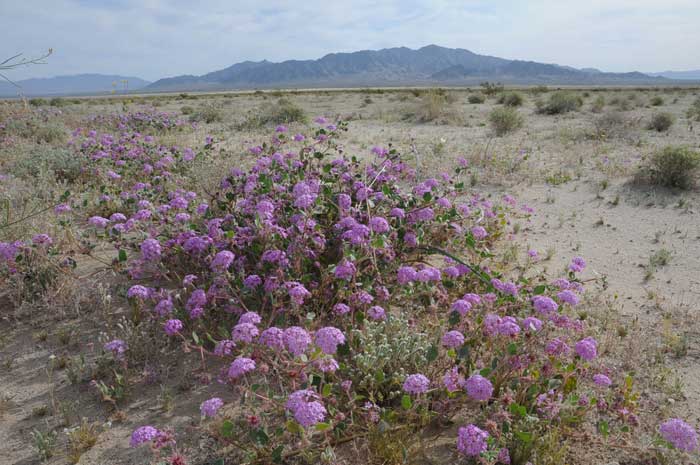^Sand verbenas (Abronia villosa) cover broad bajadas, looking northwards to the Palen Mountains.
Spring Wildflowers
April 9-10, 2010 - We took a hike across the proposed Palen Solar Power Project in spring and the wildflowers were superb. The creosote flowered yellow, and masses of purple sand verbena grew over the gradually sloping alluvial fan north of Interstate Highway 10. But the best show came from numerous Desert lilies blooming white on three- to four-foot tall stems out of the sand. The garlic-like bulb of Desert lilies grows deep down in the sand, waiting for a good rainy year to bloom. They are also called Ajo lilies.
We walked down to the dry playa and dunes on the northern edge of the site proposal, then swung around towards the east to cover a large area of excellent Mojave fringe-toed lizard sand habitat on the hummocky gradual slope above the bottom of the valley. This area is part of a large sand-transport corridor that moves along Chuckwalla Valley by winds. Several large solar projects proposed for the valley floor threaten to block this sand flow and cut off the replenishment of sand for many animals dependent on this special habitat.
Tracks of Desert kit fox (Vulpes macrotis), kangaroo rat (Dipodomys sp.), Coyote (Canis latrans), and Western banded gecko (Coleonyx) could be seen all over. A Round-tailed ground squirrel (Xerospermophilus tereticaudus) peeped at us from a burrow. Horned larks flew up from the desert floor.
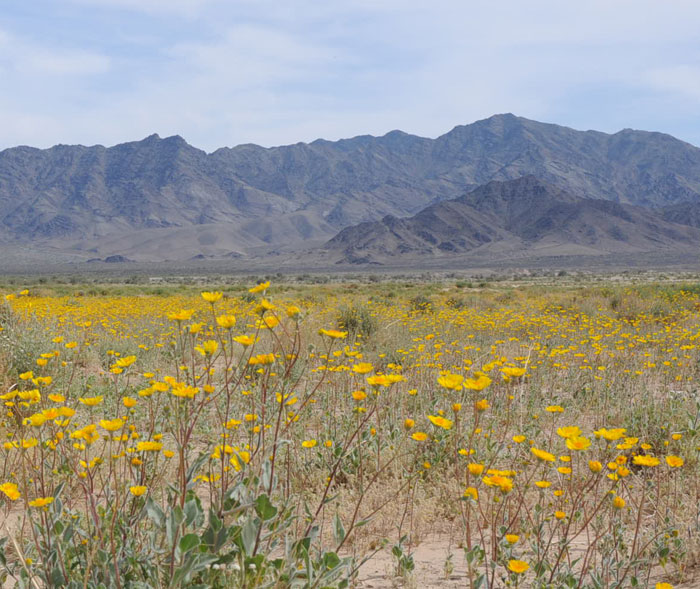
^Desert gold (Geraea canescens) stretching towards the sun on the project site, with the Palen Mountains in the background which is part of the Palen-McCoy Wilderness.
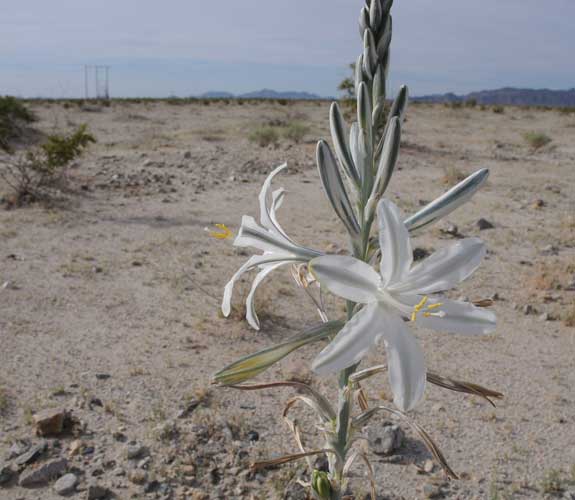
^Desert lily (Hesperocallis undulata) opening on the upper part of the project site where sands finally give way to gravel and harder-packed sand substrates.

^On our visit a wide band of dense Desert gold filled the flat on the outskirts of the playa.

^Desert gold.
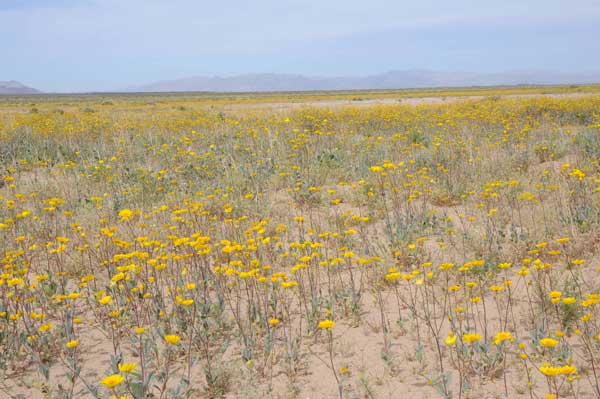
^Fields of Desert gold, looking west across the project site.
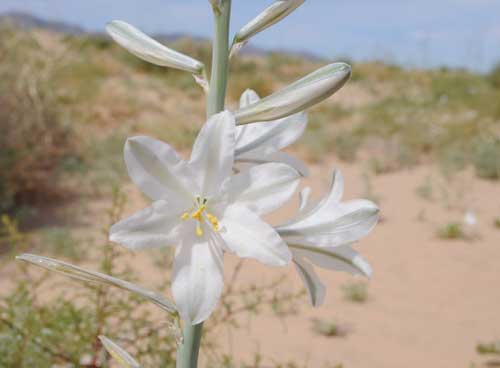
^Desert lily on sand habitat.
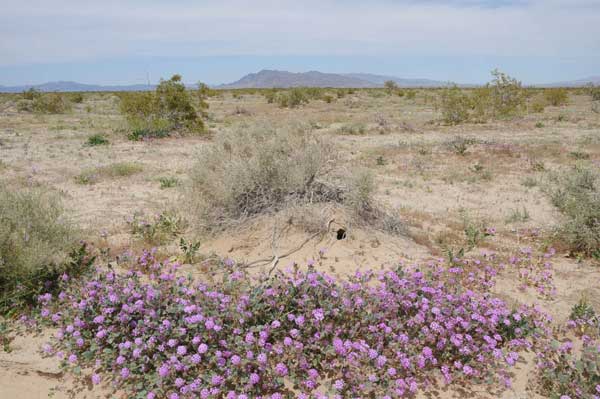
^Sand verbenas on creosote flats.
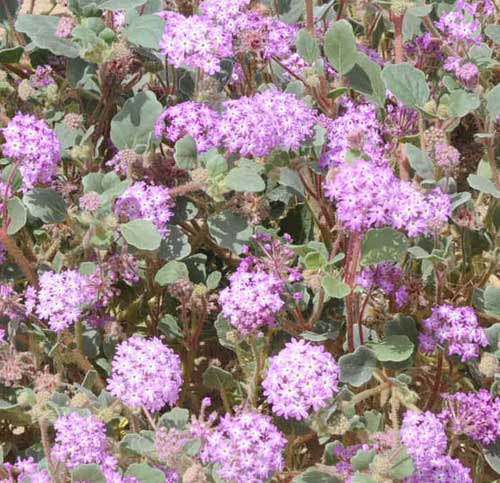
^Colorful verbenas.
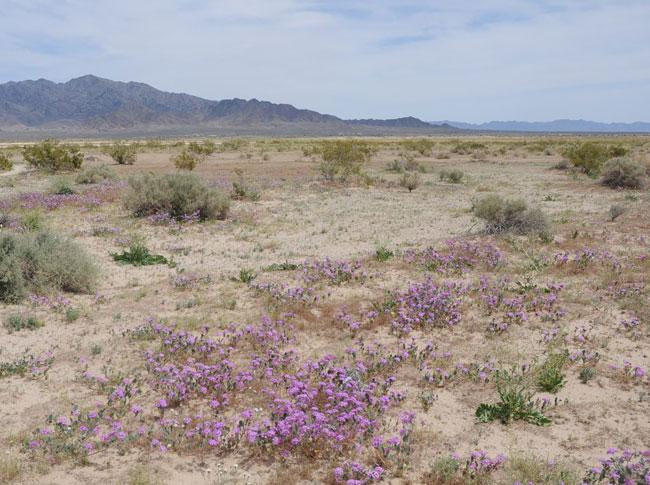
^The project site looking northeast down towards the sand areas. But even up on this higher southern part of the site the soil is sandy.
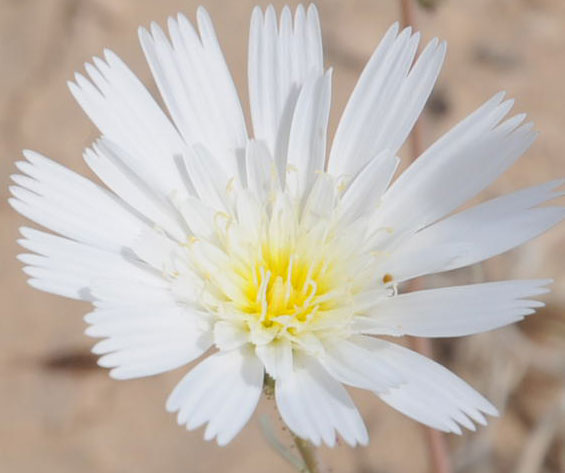
^White tackstem (Calycoseris wrightii).
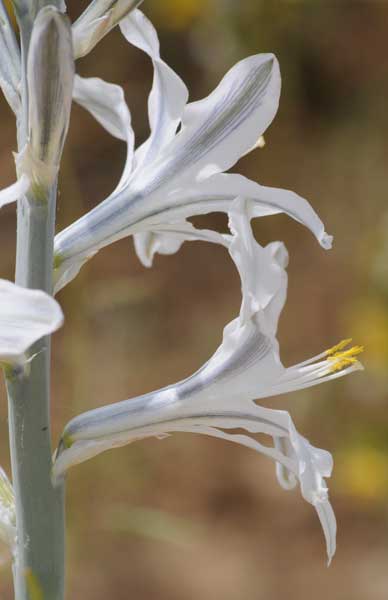
^Showy Desert lily.
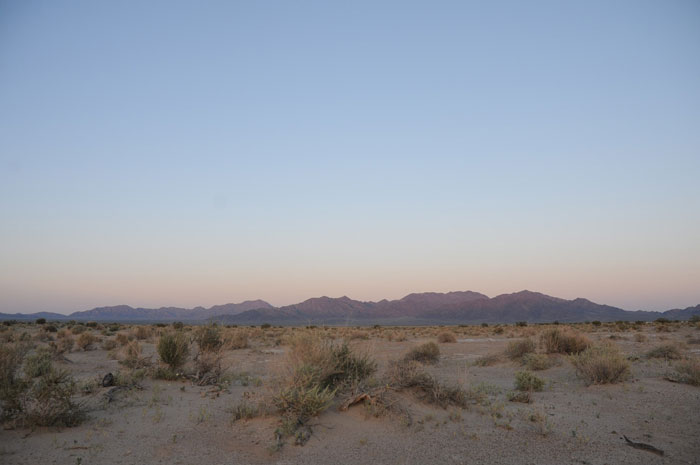
^Sunset on the Palen Mountains from the west.
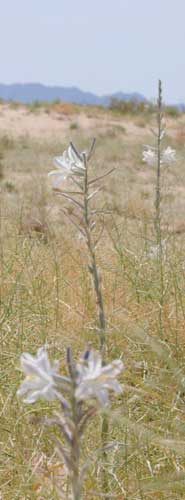
^Desert lilies grow dense in spots.

^Petals of Desert lily.
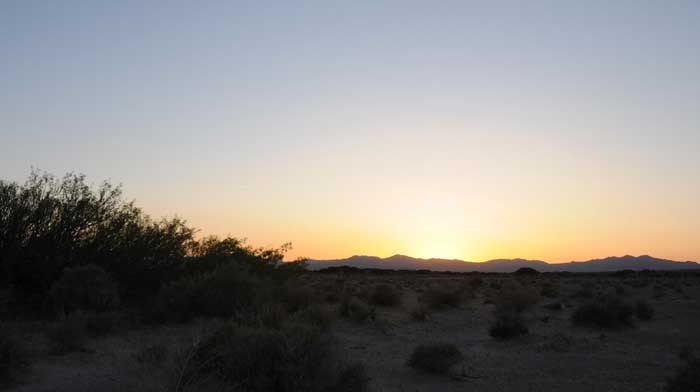
^Sunset looking westwards through a Honey mesquite (Prosopis glandulosa) grove on the west side of Palen Dry Lake, off the project site.
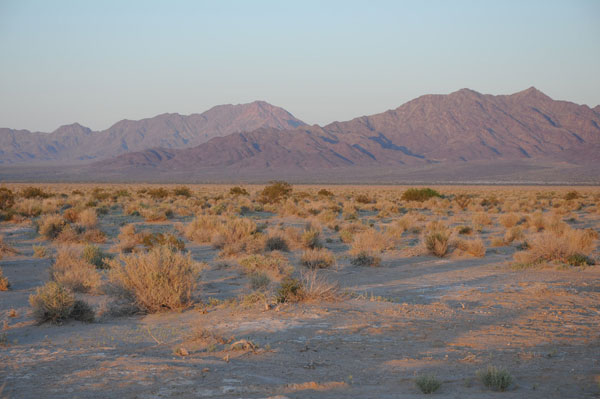
^Sunset on the Palen Mountains next to the dry lake.
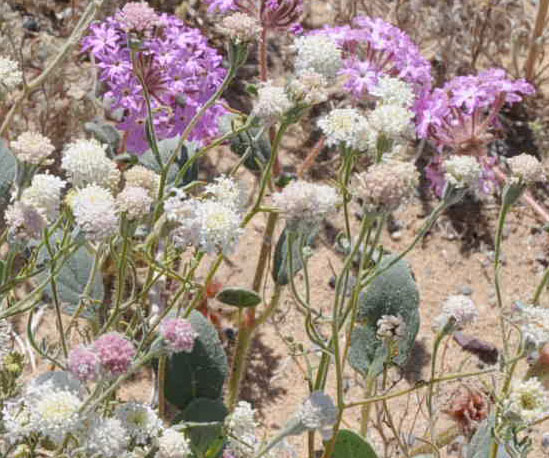
^White pincushion (Chaenactis sp.) flowers and verbena.
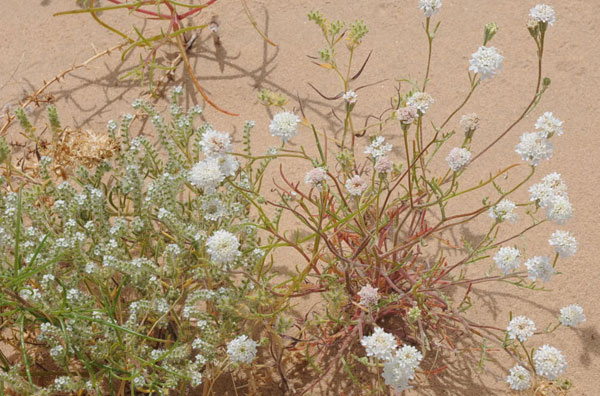
^Delicate Cryptantha (Cryptantha sp.) and pincushion on sand.
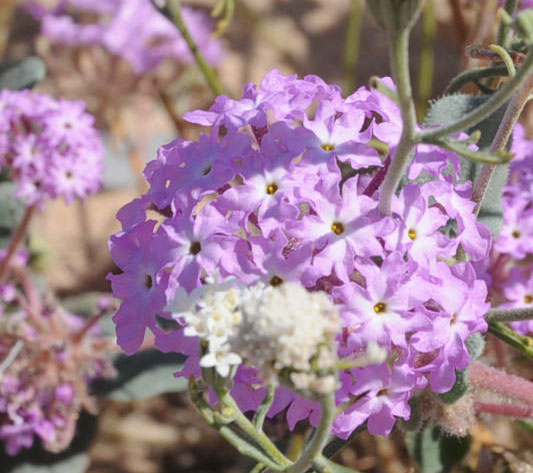
^Sand verbena.
Dunes: Sand Flow
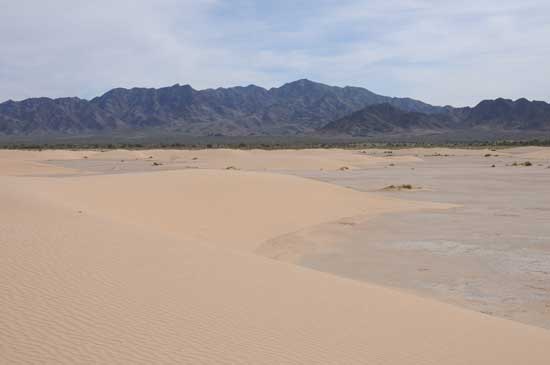
^Palen Dunes and playa formations just on the north side of the project site.
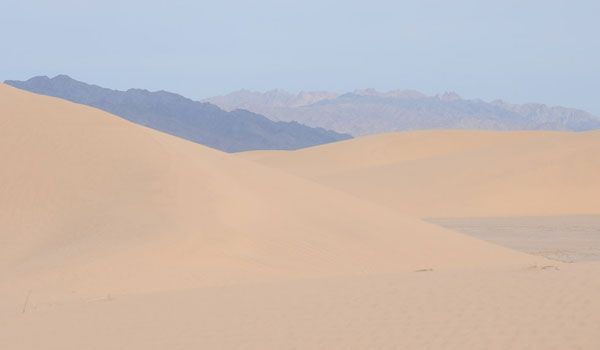
^Dune fields blown by the wind.
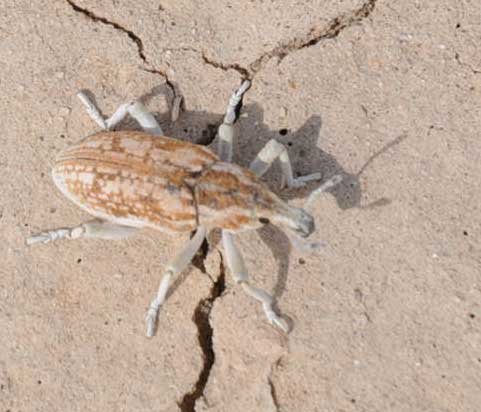
^A silvery weevil (Apleurus albovestitus) out on the playa.
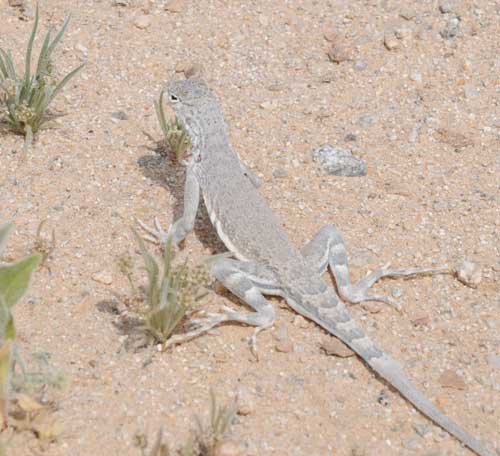
^Zebra-tailed lizard (Callisaurus draconoides) on a gravelly playa area.
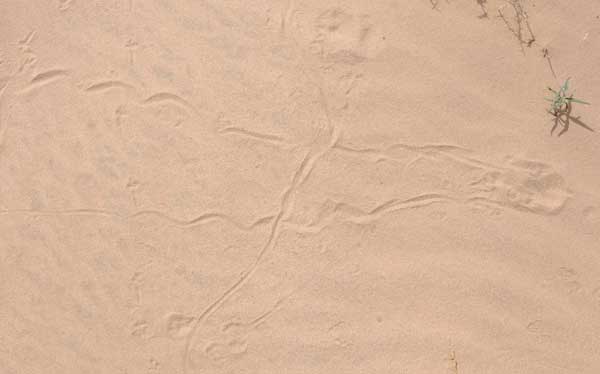
^Tracks of Western shovel-nosed snakes (Chionactis occipitalis) hunting through sand during the night. By day they lie buried and hidden. These little black-and-white striped snakes need loose sand to survive.
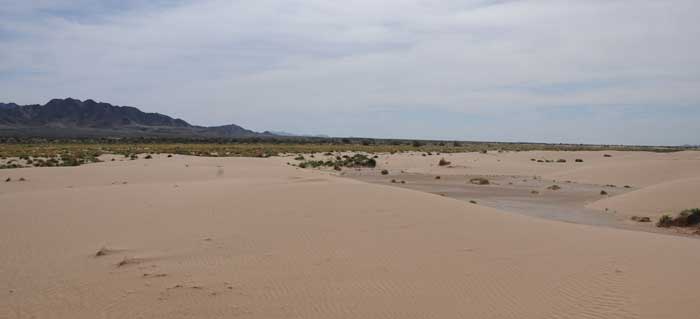
^Dune panorama looking down the Chuckwalla Valley toward the east. This sand movement corridor may be blocked by part of the project.
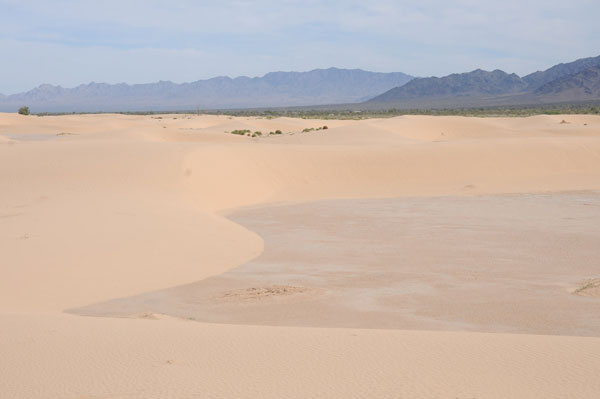
^Dunes and playas on the move.
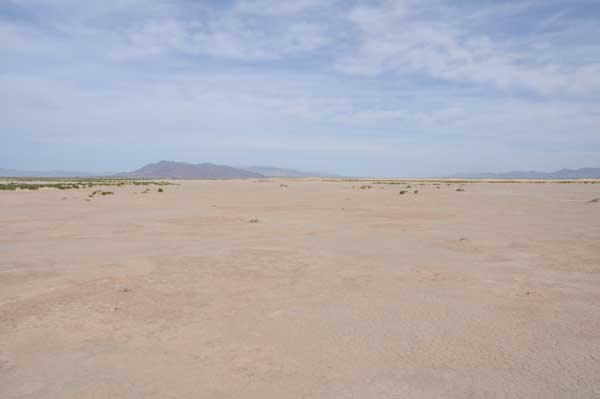
^Wide dry playa. Water collects here at times after intense storm run-off. Part of the project would lie on this formation.

^A Sidewinder (Crotalus cerastes) sits in a burrow next to the playa.
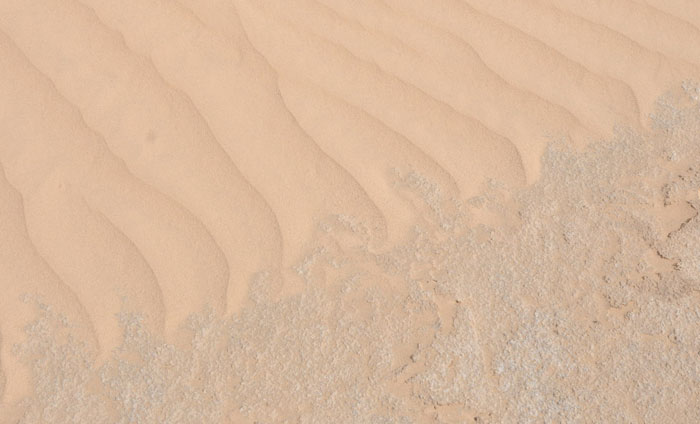
^Sand ripples where a dune meets the playa.
Southernmost Mojave Fringe-toed Lizards
The Mojave fringe-toed lizard (Uma scoparia) lives in the Chuckwalla Valley Colorado Desert area of sand habitat patches along the valley floor from the Colorado River to Joshua Tree National Park in the west. They are sand specialists, but we found them also in fairly hard-packed sand as well as very loose hummocks. We estimate nearly two-thirds of the project site may be fringe-toed lizard habitat. Where we saw Desert lilies, we often saw these lizards.
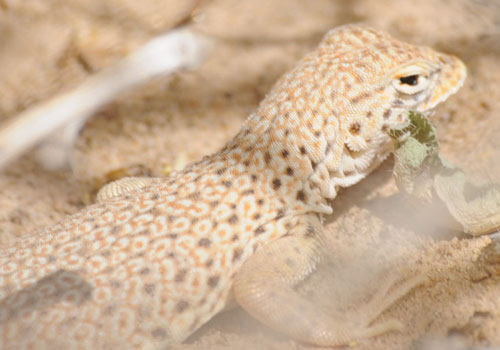
^Mojave fringe-toed lizard (Uma scoparia) on the project site sandy habitat.
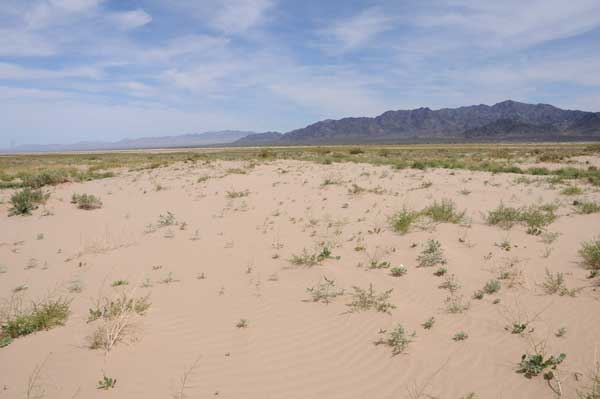
^Fringe-toed lizard sand hummock habitat on the eastern side of the project site.
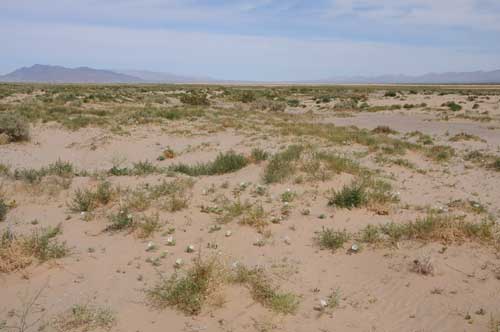
^Vegetated sand habitat where we saw several fringe-toed lizards, east of the playa.
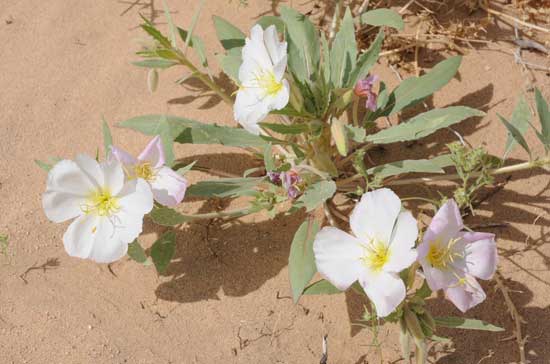
^Dune evening primrose (Oenothera deltoides).
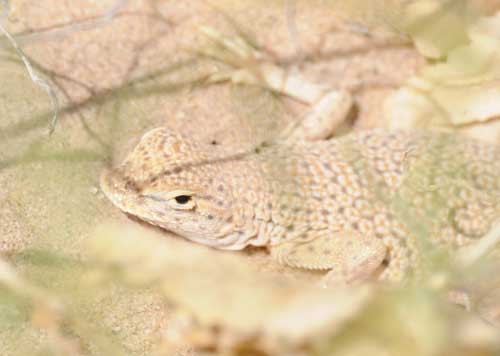
^Fringe-toed lizard trying to hide in vegetation.
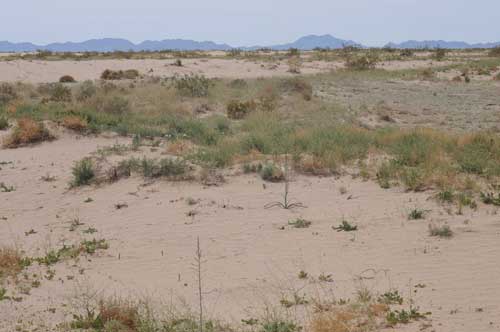
^Desert lilies are common on the fringe-toed lizard habitat.
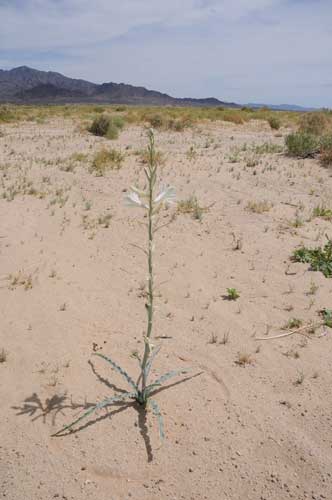
^Desert lily. Where we found these plants, we often found fringe-toed lizards.
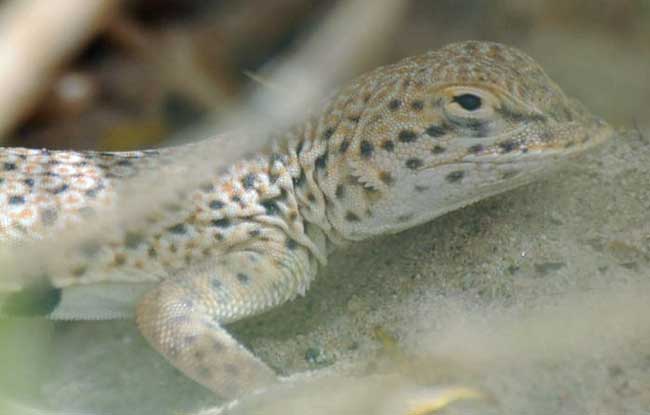
^Fringe-toed lizard. Notice the fringe of scales along the ear opening to the left of the eye, to keep sand out. These sand-specialists also have fringed "eyelash" scales.
HOME.....Palen Solar Millennium Updates.....Blythe Solar Millennium
